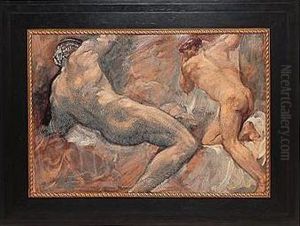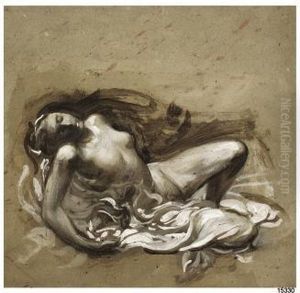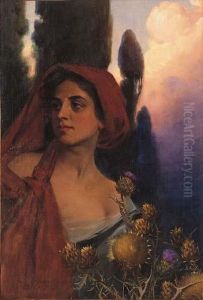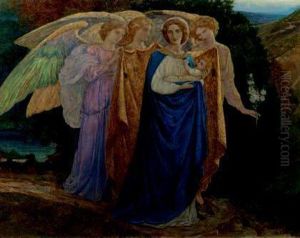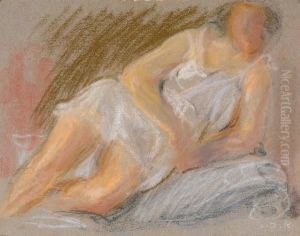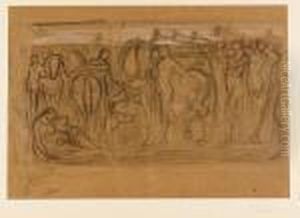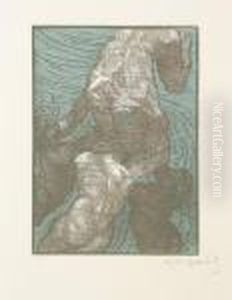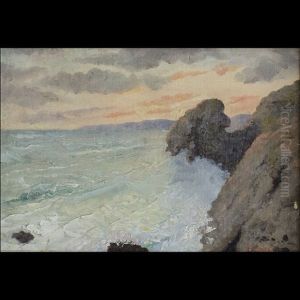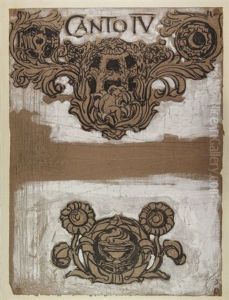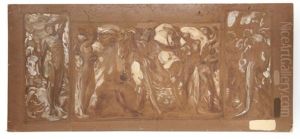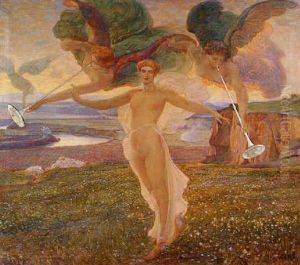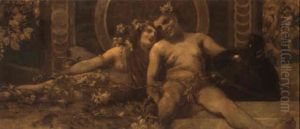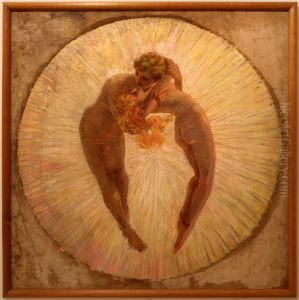Adolfo De Carolis Paintings
Adolfo De Carolis was an influential Italian artist, born on June 30, 1874, in Montefiore dell'Aso, a small town in the Marche region of Italy. His contributions to art spanned various disciplines, including painting, illustration, and graphic design, making him a versatile figure in the Italian art scene of the late 19th and early 20th centuries. De Carolis is particularly celebrated for his role in the Italian Liberty style, the local variant of Art Nouveau, and for his efforts in reviving traditional Italian crafts.
After initial studies at the Scuola del Libro in Urbino, an institution known for its emphasis on the applied arts, De Carolis moved to Rome to further his education. In Rome, he immersed himself in the bustling cultural scene, studying at the Accademia di San Luca and coming into contact with several prominent artists and intellectuals of the time. This period was crucial in shaping his artistic vision, which combined classical ideals with contemporary stylistic movements.
De Carolis gained recognition for his exquisite book illustrations, which often blended Art Nouveau elements with Renaissance-inspired themes. His work in this area contributed significantly to the visual culture of the period and helped to establish him as a leading figure in the Italian decorative arts. Additionally, De Carolis was a proficient muralist, and his frescoes can be found in various public and private buildings across Italy. These works are characterized by their harmonious compositions and the integration of architectural elements with painted scenes.
Beyond his achievements in visual art, De Carolis also played a vital role in the revival of traditional Italian crafts, particularly in the Marche region. He was instrumental in encouraging the resurgence of interest in techniques such as woodcut printing and majolica pottery, seeing them as essential components of Italy's cultural heritage. Through his efforts, De Carolis helped to foster a sense of national pride and identity during a period of significant social and political change in Italy.
Adolfo De Carolis passed away on February 8, 1928, in Rome, but his legacy endures. His work continues to be celebrated for its beauty and craftsmanship, as well as for its contribution to the cultural renaissance of early 20th-century Italy. De Carolis's commitment to the integration of art and life, as well as his dedication to the preservation of Italian artistic traditions, has made him a pivotal figure in the history of Italian art.
